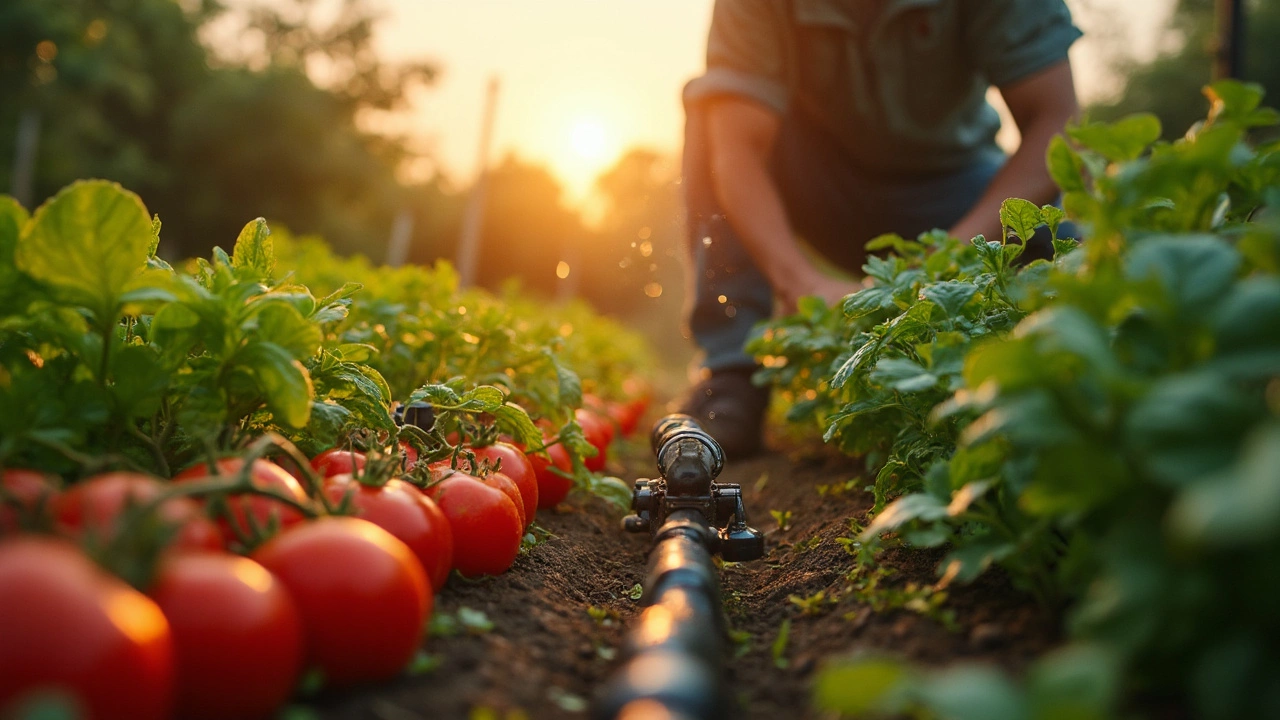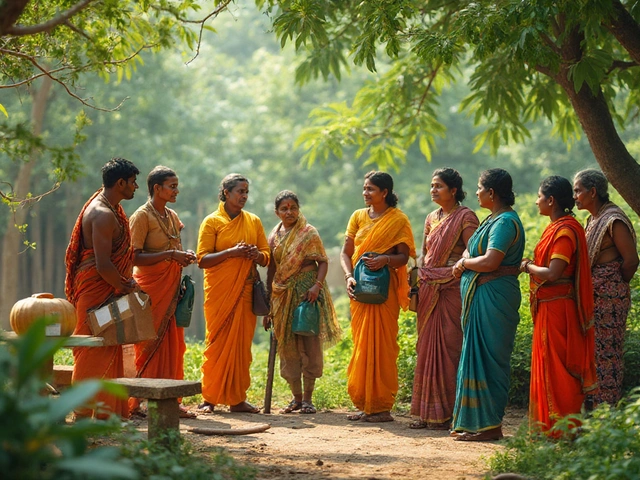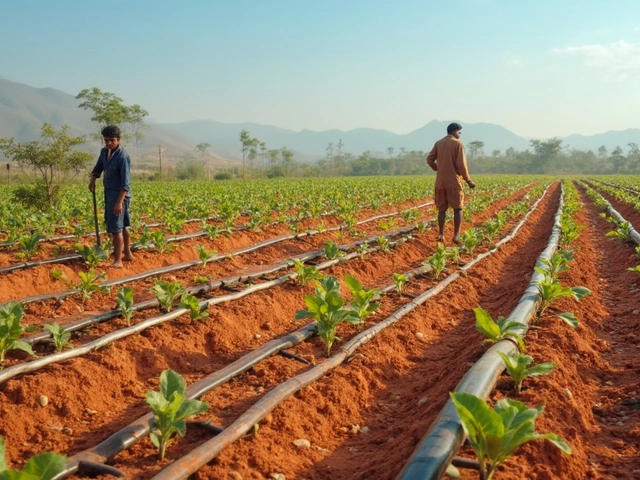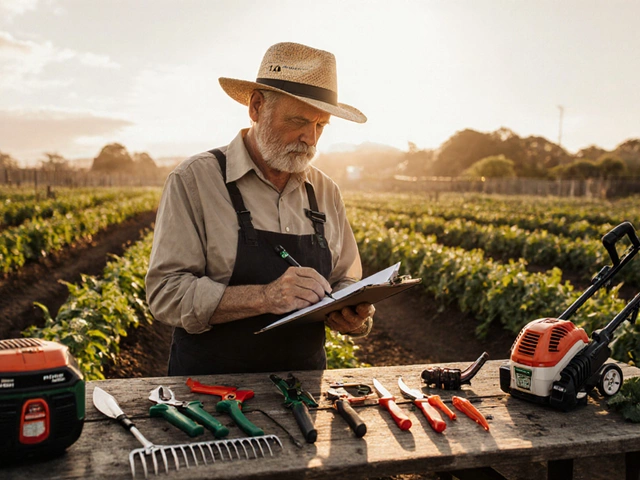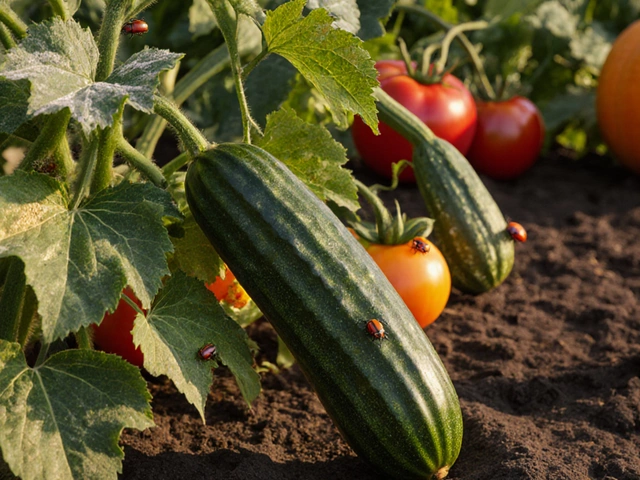When you set up a drip irrigation system, you want to know how many years it’ll last before you’re out in the yard fixing leaks or swapping out old tubing. No one likes a surprise flood next to their tomatoes or dead patches in their carefully planned garden beds. The truth? A drip system doesn’t last forever, but it’s not a quick burnout either.
For most setups, you can expect somewhere between 8 to 15 years before you face major replacement—sometimes more if you’re really on your game with maintenance. Cheap connectors might only last a few seasons, though, especially if you’re dealing with strong sun, hard water, or curious pets that like to chew or dig.
Some parts go the distance; others, not so much. Tubing usually fares well, but tiny emitters and connectors are honest about their lifespan and are the first to show their age. Sunlight, water quality, and plain old dirt can all speed things up or slow them down. There’s no magic number without considering your climate and how you treat the setup.
- How Long Do Drip Irrigation Systems Last?
- What Wears Out First (And Why)?
- Factors That Make a Big Difference
- How to Make Your Drip System Last Longer
How Long Do Drip Irrigation Systems Last?
If you’ve ever wondered how much time your drip irrigation system really has before things start going south, here’s the deal. On average, whole systems give you 8 to 15 dependable years, but that’s not the whole story. Some folks squeeze out 20 years, while others are doing patchwork by year five. It’s not just random luck—it comes down to what you buy, how you install, and how you treat the system once it’s up and running.
The main pipes and tubing rarely give out early; it’s usually the connectors, emitters, and tiny filters that call it quits first. Think of it like your car’s tires and windshield wipers—they just take more abuse. Most manufacturers claim UV-rated tubing lasts the longest, sometimes up to 20 years in mild climates.
Here’s what you’ll often see in the field:
| Component | Typical Lifespan (Years) |
|---|---|
| Tubing (UV-stabilized) | 10 - 20 |
| Emitters | 2 - 7 |
| Drip tape (thin-walled) | 1 - 3 |
| Connectors/Fittings | 3 - 8 |
| Filters | 5 - 10 |
Big irrigation companies stand by their gear, but they’re honest about the weak spots. Hunter Industries sums it up:
"With regular checks and seasonal maintenance, the core of a drip system can easily last over a decade. Small parts and emitters may need more frequent attention."
If you’re in a harsh climate—think blazing sun, salty water, or gophers on a mission—expect a shorter run, especially for the thinner parts. For a home garden in a calm, shaded city? You may only swap out a few emitters after years of watering.
Here’s what really matters: check your setup a couple times each season, flush out grit, and stash your spare parts somewhere handy. Staying proactive with these small habits is honestly how you push your system to those top numbers rather than fizzling out early.
What Wears Out First (And Why)?
It’s always the same story: the small but crucial parts of your drip irrigation system are the first to show their age. Forget the main tubing for now—the real troublemakers are usually the emitters, connectors, and filters. Let’s break down what goes wrong most, and why.
Emitters are the MVPs of any system, but they’re also the weak link. Minerals from hard water clog them up, and the tiny holes get blocked by bits of dirt or algae. Some folks joke that emitters act like coffee makers—eventually, they need a deep clean or swap-out. Most manufacturers admit that emitters may only last 1-3 years in tough conditions, maybe up to 5-7 years if you’ve got a gentle setup with clean water and a filter that’s actually working.
Connectors, on the other hand, have a rough life above ground. The plastic gets brittle from UV rays, or it softens in baking heat. Ever tripped over a garden hose and popped a connector loose? Welcome to the club. These little pieces crack, warp, or snap after too much sun or a rough winter. Expect to replace at least a few of them every 2-4 years.
Filters and pressure regulators are there to protect your system, but if they clog or fail, the whole thing stops working right. A filter stuffed with bits of leaf or algae can make your emitters useless in a single summer. Clean filters every month in heavy-use seasons, and swap them out every couple of years if you see wear or buildup that won’t scrub off.
Here’s a quick breakdown of how long each part typically lasts (real-world averages):
| Drip Part | Typical Lifespan | Main Problem Area |
|---|---|---|
| Emitters | 1–5 years | Clogging/mineral buildup |
| Connectors | 2–4 years | UV damage/cracking |
| Main Tubing | 10–15 years | Sun damage, accidental cuts |
| Filters | 1–3 years | Clogging/debris |
| Pressure Regulator | 4–8 years | Internal wear, sudden spikes in water pressure |
In short, if you’re noticing more leaks or uneven watering than usual, it’s time to start checking these little components first. Swapping out a handful of emitters or connectors every season is just part of the game and keeps the whole system running strong.
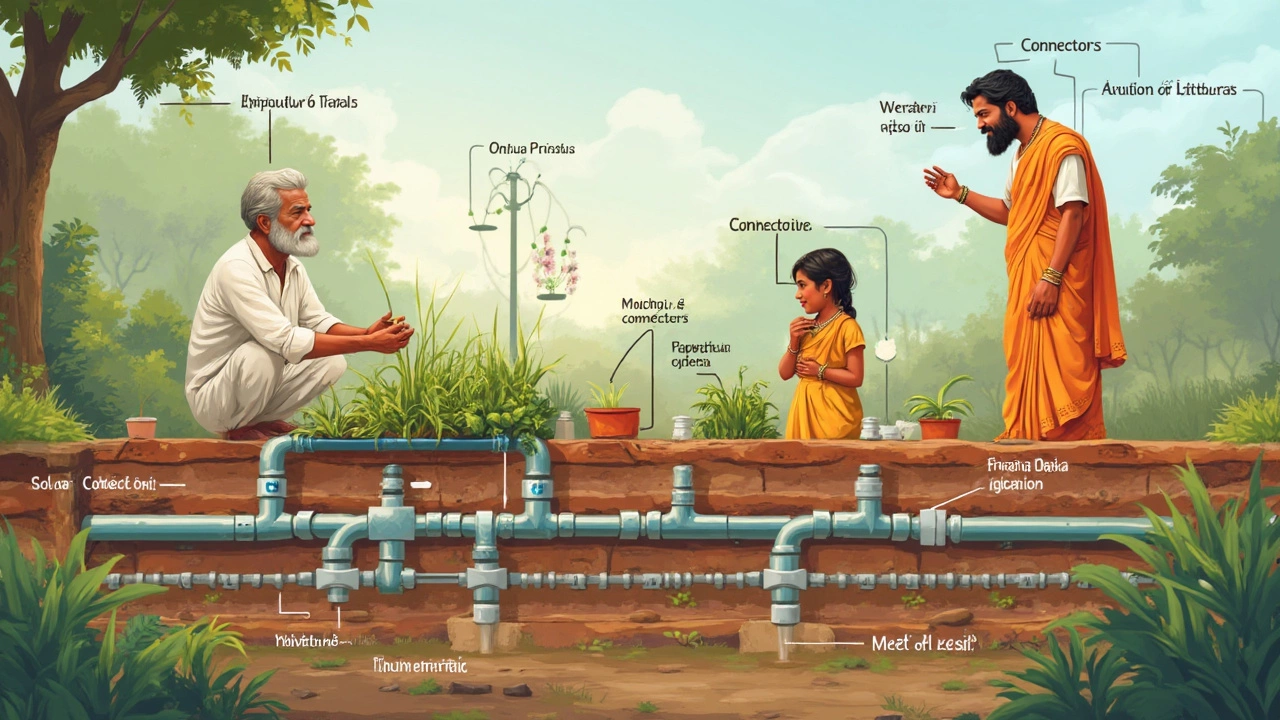
Factors That Make a Big Difference
No two gardens use their drip irrigation systems under exactly the same conditions, so a handful of things really shape how long your setup will last. Take a look at some hard facts and tips that can either give you a decade of easy watering or leave you patching hoses every summer.
Drip irrigation system life mostly comes down to four things: sun exposure, water quality, type of system you install, and how much maintenance you actually do—not just plan to do. For example, UV light is rough on plastic tubing. Cheap tubing left in full sun might get brittle and crack in just a few years. Better tubing often has UV protection, so if you’re shopping, check the specs for this feature.
Water quality is another big deal. If you have hard water or water with a lot of debris, emitters can clog up fast. Here’s a quick breakdown of how certain factors affect lifespan:
| Factor | Impact on Lifespan | Details |
|---|---|---|
| Sun/UV Exposure | Shortens | Can make tubing brittle in 2-4 years without UV protection. |
| Water Quality | Shortens | Hard water clogs emitters; dirty water causes debris buildup. |
| System Quality | Extends | Premium parts often last 10+ years; cheaper kits last less. |
| Maintenance | Extends | Regular flushing, cleaning filters, and checking for leaks push systems past 10 years. |
Small critters are another odd factor—squirrels and even dogs sometimes chew the lines, especially in hot weather when everyone’s thirsty. If that’s common in your area, burying or shielding tubing makes a big difference.
Don’t forget about freeze and thaw. In places with harsh winters, leaving water in the lines can split your tubing. Blowing out the system before things freeze saves you a ton of headaches (and cash) each spring.
- Buy tubing with UV protection for open gardens.
- Install a filter if your water comes from a well or is full of minerals.
- Flush the system each year, especially after the growing season.
- Lift and inspect lines regularly in animal-heavy yards.
If you want a system that outlasts your neighbor’s and doesn’t break down mid-summer, paying attention to these factors pays off (literally and otherwise).
How to Make Your Drip System Last Longer
Getting your drip irrigation system to stick around for the long haul isn’t rocket science, but it does call for a bit of regular attention. Most people ignore their setup until a plant wilts or a puddle appears. You can do better. A few monthly habits and smart choices up front change everything.
Start with quality parts if you want less trouble. Cheap tubing is usually thin, fades fast under the sun, and gets brittle. Go for UV-resistant tubing and fittings. Brands like Rain Bird or Netafim cost a little more, but they’re made to hold up for about 10–15 years. That’s real value if you hate redoing work out in the heat.
Water is sneaky. Minerals build up and clog emitters over time, especially if you’re not filtering. Most standard drip systems should have a filter on the main line. Check it every month or two. It might take you five minutes to pop it open, rinse, and put it back. That tiny bit of effort keeps your whole system flowing right.
The biggest lifesaver? Flushing your lines a couple times a year. Dirt, bugs, and even small roots can get into open ends or push through weak connections. Open up the end caps, turn the water on full blast for a minute, and let the grime shoot out.
- Inspect emitters and connectors for leaks or clogs every spring and late summer.
- Replace cracked or faded parts before they fail. Don’t wait for a bust-up in the middle of July.
- Keep the lines buried or shielded from direct sun. Simple mulch or hose sleeves go a long way.
- Use pressure regulators and backflow preventers. High pressure kills drip lines faster than anything else.
- Teach the kids (and dog) to leave the system alone. Pets love to pull up a line, and once they start, they don’t quit.
Here’s a quick look at what these habits mean for average part life, assuming you do routine maintenance and use mid-grade parts:
| Component | Expected Life (years) |
|---|---|
| Main Tubing | 10-15 |
| Emitters | 2-5 |
| Connectors & Fittings | 5-10 |
| Filter | 5-7 |
| Pressure Regulator | 7-10 |
The main takeaway? Regular inspections and quick fixes stretch the drip irrigation system lifespan by years. And if I ever slack off, Rohan’s the first to notice the plants suffering—so now it’s a team effort keeping things running smooth. Stay on top of the basics and your garden (and wallet) will thank you.
